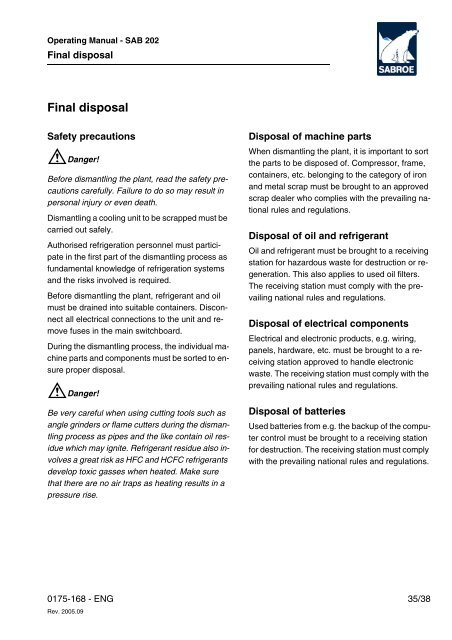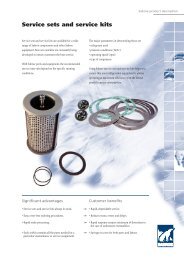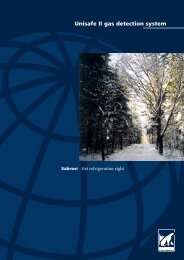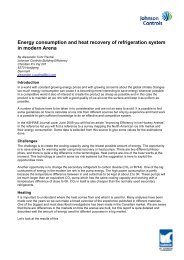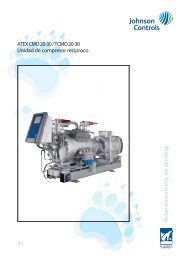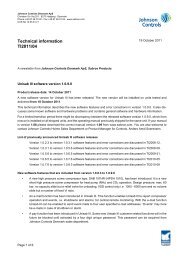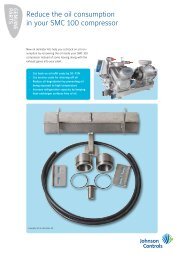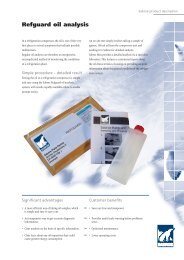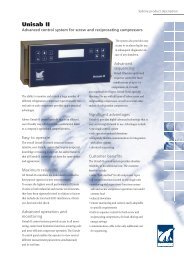Operating manual SAB 202
Operating manual SAB 202
Operating manual SAB 202
You also want an ePaper? Increase the reach of your titles
YUMPU automatically turns print PDFs into web optimized ePapers that Google loves.
<strong>Operating</strong> Manual - <strong>SAB</strong> <strong>202</strong><br />
Final disposal<br />
Final disposal<br />
Safety precautions<br />
WDanger!<br />
Before dismantling the plant, read the safety precautions<br />
carefully. Failure to do so may result in<br />
personal injury or even death.<br />
Dismantling a cooling unit to be scrapped must be<br />
carried out safely.<br />
Authorised refrigeration personnel must participate<br />
in the first part of the dismantling process as<br />
fundamental knowledge of refrigeration systems<br />
and the risks involved is required.<br />
Before dismantling the plant, refrigerant and oil<br />
must be drained into suitable containers. Disconnect<br />
all electrical connections to the unit and remove<br />
fuses in the main switchboard.<br />
During the dismantling process, the individual machine<br />
parts and components must be sorted to ensure<br />
proper disposal.<br />
WDanger!<br />
Be very careful when using cutting tools such as<br />
angle grinders or flame cutters during the dismantling<br />
process as pipes and the like contain oil residue<br />
which may ignite. Refrigerant residue also involves<br />
a great risk as HFC and HCFC refrigerants<br />
develop toxic gasses when heated. Make sure<br />
that there are no air traps as heating results in a<br />
pressure rise.<br />
Disposal of machine parts<br />
When dismantling the plant, it is important to sort<br />
the parts to be disposed of. Compressor, frame,<br />
containers, etc. belonging to the category of iron<br />
and metal scrap must be brought to an approved<br />
scrap dealer who complies with the prevailing national<br />
rules and regulations.<br />
Disposal of oil and refrigerant<br />
Oil and refrigerant must be brought to a receiving<br />
station for hazardous waste for destruction or regeneration.<br />
This also applies to used oil filters.<br />
The receiving station must comply with the prevailing<br />
national rules and regulations.<br />
Disposal of electrical components<br />
Electrical and electronic products, e.g. wiring,<br />
panels, hardware, etc. must be brought to a receiving<br />
station approved to handle electronic<br />
waste. The receiving station must comply with the<br />
prevailing national rules and regulations.<br />
Disposal of batteries<br />
Used batteries from e.g. the backup of the computer<br />
control must be brought to a receiving station<br />
for destruction. The receiving station must comply<br />
with the prevailing national rules and regulations.<br />
0175-168 - ENG<br />
Rev. 2005.09<br />
35/38


